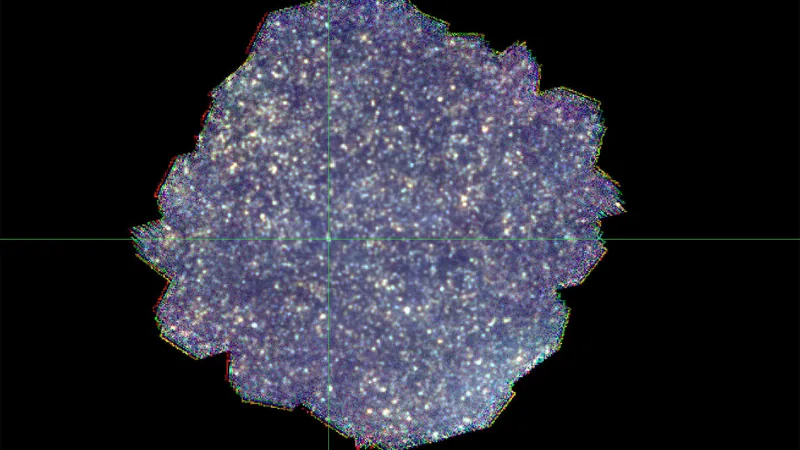
Unlocking the Universe: 'Hidden Galaxies' Could Hold the Key to Cosmic Mysteries
2025-04-10
Author: Siti
A Cosmic Revelation Awaits
Astronomers have discovered tantalizing hints of a mysterious population of "hidden galaxies" that could drastically change our understanding of the cosmos. If their existence is confirmed, it may revolutionize current theories surrounding galaxy numbers and evolution, and shed light on the universe's elusive energy sources.
The Energy of the Cosmos
These potential galaxies are posited to contribute significant amounts of infrared light, possibly filling a gap in the universe's energy budget. Their collective glow might just provide the key to accounting for all energy emissions observed at long wavelengths.
The Deepest View Yet
Evidence for these hidden galaxies emerged from the deepest image ever captured of the universe in far-infrared wavelengths. This groundbreaking image, featuring nearly 2,000 distant galaxies, has been created by a team from STFC RAL Space and Imperial College London.
Dr. Chris Pearson, the leading author of a recently published study, explains, "This work has pushed the science with Herschel to its absolute limit, uncovering possible new populations of galaxies contributing to the universe's faintest light."
Stacking for Depth
To achieve this unprecedented view, researchers stacked a staggering 141 images, using data from the SPIRE instrument on the Herschel Space Observatory. The result? The Herschel-SPIRE Dark Field—an image five times deeper than any previous observations.
Solving the Crowding Issue
However, the sheer number of detected galaxies led to a merging of individual objects, making analysis a challenge. MIT Ph.D. student Thomas Varnish, who helped lead the second part of the research, noted, "We had to employ statistical techniques to navigate the density and extract the underlying distribution of galaxies that were engulfed in the blur."
A Game-Changer for Galaxy Evolution
If this new group of galaxies is verified, it would challenge all existing models related to galaxy evolution. The research team is now eager to confirm their findings using various telescopes across different wavelengths, seeking to understand the pivotal role these dusty, faint objects play in cosmic history.
The Importance of Infrared Observations
Dr. Pearson emphasizes, "When we gaze at the cosmos through conventional telescopes, we only grasp half the story; the rest is shrouded in dust. Approximately half of the universe's energy output comes from starlight that has been absorbed and re-emitted as cooler infrared radiation."
The Legacy of the Herschel Observatory
The Herschel Space Observatory was designed to observe the universe in infrared, with its SPIRE instrument covering the longest wavelengths. Although the mission concluded in 2013, its legacy continues, revealing groundbreaking results over a decade later.
A New Mission on the Horizon
Looking ahead, researchers are advocating for the next-generation far-infrared mission known as PRIMA, currently proposed to NASA. This ambitious project aims to utilize a 1.8-meter telescope specifically optimized for far-infrared imaging and spectroscopy.
Dr. David Clements from Imperial College London remarked on the potential of PRIMA, stating, "We need this next step to capture even more data and follow up on these thrilling findings. The next selections for NASA's missions will take place in 2026, and we are eagerly awaiting the outcome."




 Brasil (PT)
Brasil (PT)
 Canada (EN)
Canada (EN)
 Chile (ES)
Chile (ES)
 Česko (CS)
Česko (CS)
 대한민국 (KO)
대한민국 (KO)
 España (ES)
España (ES)
 France (FR)
France (FR)
 Hong Kong (EN)
Hong Kong (EN)
 Italia (IT)
Italia (IT)
 日本 (JA)
日本 (JA)
 Magyarország (HU)
Magyarország (HU)
 Norge (NO)
Norge (NO)
 Polska (PL)
Polska (PL)
 Schweiz (DE)
Schweiz (DE)
 Singapore (EN)
Singapore (EN)
 Sverige (SV)
Sverige (SV)
 Suomi (FI)
Suomi (FI)
 Türkiye (TR)
Türkiye (TR)
 الإمارات العربية المتحدة (AR)
الإمارات العربية المتحدة (AR)